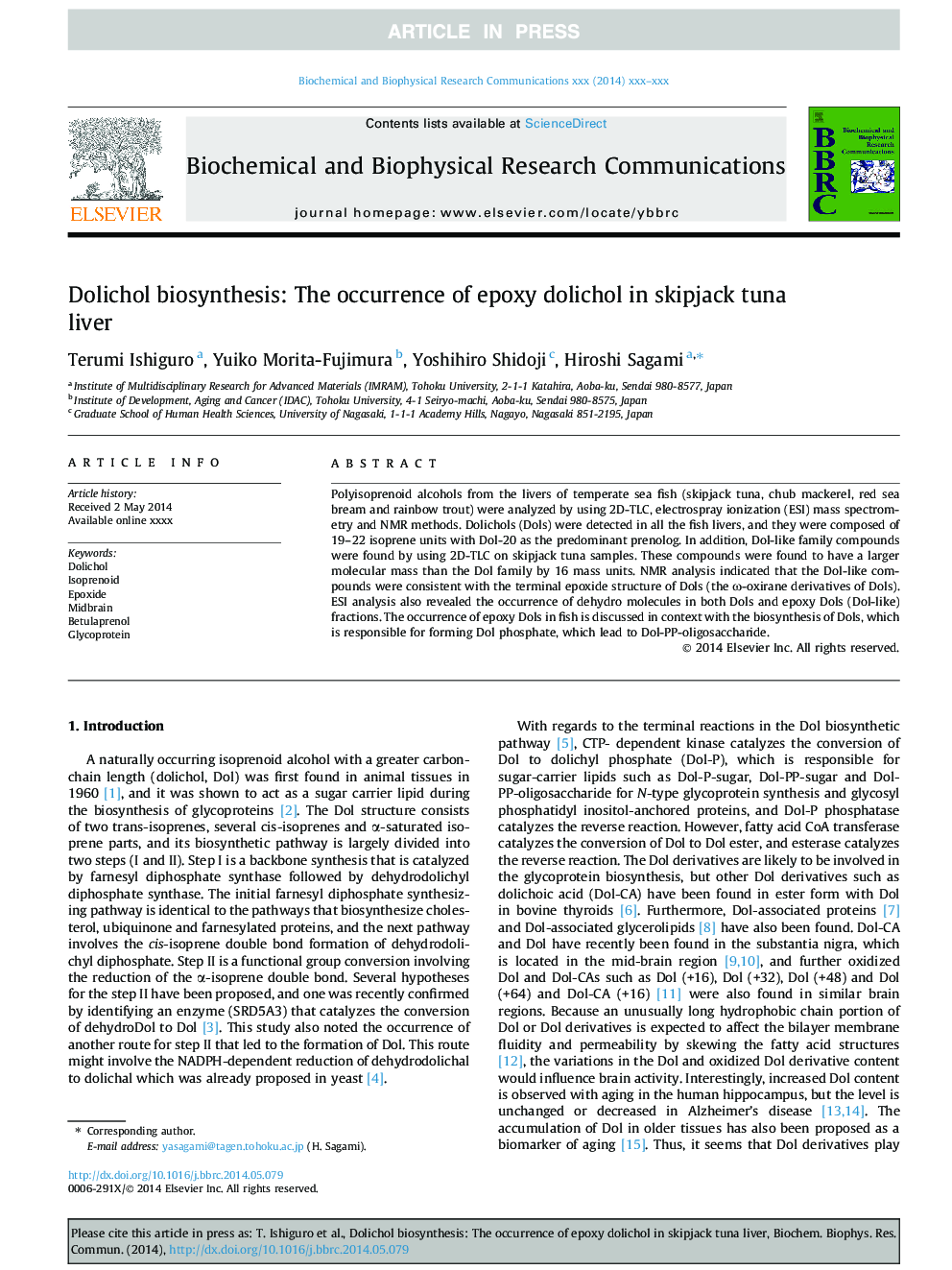| Article ID | Journal | Published Year | Pages | File Type |
|---|---|---|---|---|
| 10754064 | Biochemical and Biophysical Research Communications | 2014 | 5 Pages |
Abstract
Polyisoprenoid alcohols from the livers of temperate sea fish (skipjack tuna, chub mackerel, red sea bream and rainbow trout) were analyzed by using 2D-TLC, electrospray ionization (ESI) mass spectrometry and NMR methods. Dolichols (Dols) were detected in all the fish livers, and they were composed of 19-22 isoprene units with Dol-20 as the predominant prenolog. In addition, Dol-like family compounds were found by using 2D-TLC on skipjack tuna samples. These compounds were found to have a larger molecular mass than the Dol family by 16 mass units. NMR analysis indicated that the Dol-like compounds were consistent with the terminal epoxide structure of Dols (the Ï-oxirane derivatives of Dols). ESI analysis also revealed the occurrence of dehydro molecules in both Dols and epoxy Dols (Dol-like) fractions. The occurrence of epoxy Dols in fish is discussed in context with the biosynthesis of Dols, which is responsible for forming Dol phosphate, which lead to Dol-PP-oligosaccharide.
Related Topics
Life Sciences
Biochemistry, Genetics and Molecular Biology
Biochemistry
Authors
Terumi Ishiguro, Yuiko Morita-Fujimura, Yoshihiro Shidoji, Hiroshi Sagami,
